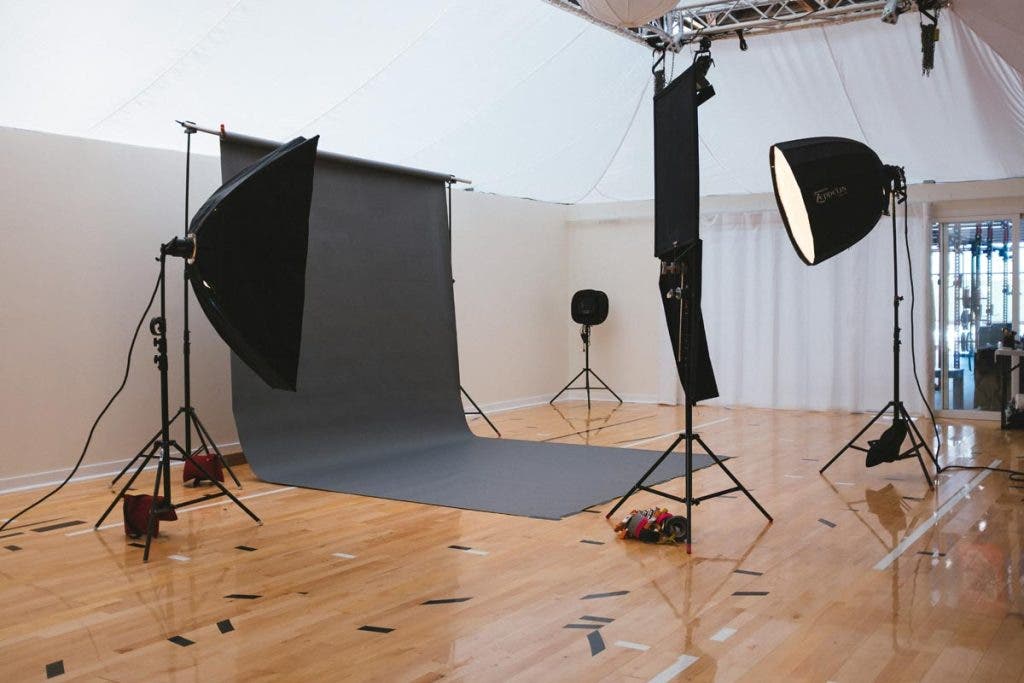In 2025, aspiring professional photographers will find a growing photography market with very good prospects. Even though nowadays almost everyone owns a camera able to take good quality pictures, the world still needs professional photographers. Furthermore, the range of photography career opportunities is expansive. From fine art analog photography to e-commerce to aerial photography to embracing AI-based niches, everything goes and can pay well. So, if, at this point, you plan on going Pro in 2025, you are in luck, market-wise. However, you still must work very hard because the competition is tough. Here is where your efforts matter the most.
Going Pro Tip 1: Upgrade Your Gear
As a beginner or amateur photographer, you can get away with using almost any camera and lenses. As a professional, however, having the right gear for your preferred photographic genre, artistic style, and workflow is essential. Not because regular cameras and lenses don’t take good photos but because you can do much more and much faster with a professional camera-lens combo.
Thanks to the latest innovations in technology, we now have cameras with large sensors and powerful image processing engines, AI-based subject recognition and tracking, 8K video recording capabilities, and advanced connectivity features. In addition, we have exquisite macro lenses and ultra-telephoto lenses for wildlife and sports photography. We have ingenious lighting equipment and all the accessories we need for a smooth and efficient workflow.
Professional gear allows you to take better shots but also to retouch your images in post-processing, enlarge photos for large-scale prints, and create mixed-media artworks.
As you see, a gear upgrade is necessary. Invest in a high-end camera specifically engineered for your artistic purposes, such as a mirrorless camera, for studio work or shooting outdoors and on the move, a cinema camera for video production, or a medium format camera for producing ultra-high resolution images.
Lens Choice
For a static photo setup, such as portraiture or product photography, choose prime lenses with exquisite optical properties. For a more dynamic setup, such as street and travel photography, you may want a fast zoom lens, but ensure it performs very well throughout the entire range of focal lengths.
Lighting
If you work in a studio, you must consider lighting equipment, tripods and light poles, props, and background options. For shooting outdoors, you must also consider a minimum of portable lighting equipment (e.g., a reliable external on/off camera flash unit, a pocket LED light, a diffuser, etc.), a sturdy tripod, extra batteries or a battery grip, and gear protection, such as UV filters, rain covers, and lens hoods.
Other Considerations
Alongside your photography-related gear, you may also need business-related gear, such as a computer, a printer, and a telephone or tablet.
Going Pro Tip 2: Create an Efficient Workflow
Gear alone can’t boost your professional photography business. You need an efficient workflow that starts with planning the photoshoots and ends with culling your photos. Photography requires good organizational skills. There is no better proof for that than the fact that all professional photo editors include digital asset management. Software companies know you need it.
The workflow must be straightforward and fit you like a glove. If you want to transform an artistic passion into a business, you’d better make a checklist and follow it thoroughly until the workflow becomes second nature.
Wasting unnecessary time in an inefficient workflow means fewer billable hours or less time for marketing your services.

Some of the following should make the list:
- Planning a photo session (e.g., location, time, gear inventory, packing, transportation options, costs, etc.)
- Arranging the photo/video setup (e.g., static studio setup with everything mounted and ready to go, dynamic setup with items that work together packed together, ready-to-use camera-lens combos, etc.)
- Storing options (e.g., memory cards, tethered shooting, online storage solutions, etc.) and file management (e.g., naming files and folders, metadata, digital asset management software, etc.)
- Editing options (e.g., photo editing software, hiring an editor, costs, file formats, etc.)
- Image culling process (e.g., during the photo shoot, immediately after the photo session, before a deadline, etc.)
Going Pro Tip 3: Built a Strong Portfolio
So far, you have focused on producing your best work, enhancing your creativity, and putting together the equipment you need. Now, it’s time to focus on sharing your work with the public and creating a credible image for potential clients.
To make it as a professional photographer in 2025, you need a strong portfolio. It needs to be a professional portfolio, which means using your professional name, including only photo series that represent your best work and current artistic and commercial interests, and publishing your portfolio in a well-known professional environment, such as 500px, SmugMug, and Behance. It’s best if you buy a domain and create a personal website. Many online platforms help you create a portfolio and even buy the domain without any software development knowledge.
Accompany your portfolio with a statement that showcases your artistic purpose and a short bio that shows your education and training in photography.

Going Pro Tip 4: How to Attract Clients
To attract clients, you have to show up. Attend photography-related events to expand your professional network. Enter online communities to establish relationships with your peers. Submit your work to popular photography competitions to gain visibility and credibility. Select a few of your works and sell them via image stock libraries to have more people see your photographs. Many of these libraries allow you to mention that you are available for hiring. Use all these opportunities to promote your photography brand and reach a larger audience.
There are a few indirect ways to reach your audience, too. For example, you may create photography courses and tutorials, publish photo books, or sell your photos as prints.
If you need some help in attracting clients, you may also want to look into digital marketing to create a more successful online presence and climb in online searches.
Be a Professional Presence on Social Media
Social media is a popular way to attract clients and reach a large audience, but it comes with a challenge. First of all, create a professional account and keep it completely separate from your personal account. Don’t post anything other than professional-related content there. Secondly, post regularly to keep your audience engaged. A content posting strategy with posts scheduled in advance may come in handy.
Keep in mind that each social media platform has its algorithms that decide what content is shown and to whom. It may help to dig into these algorithms a little bit because you’ll know how to prepare your posts for success. For example, a particular photo aspect ratio may be preferred. Some labels or tags may work better at a particular time of the year. The audience may be larger at a particular time of the day. And so on.
Take advantage of your storytelling skills when planning your social media posts. People love a good story. So, consider creating a narrative line between consecutive posts, sharing behind-the-scenes shots, and adding resonant titles or descriptions to your photos.
Social media is also big on trends. They change frequently, but some knowledge about them will benefit your photography business. For example, Pantone Color of the Year 2025 is Mocha Mousse, drone photography seems to stay on top in 2025, activism and inclusivity remain on trend, and retro styles have recurrent comebacks.
Even though growing your social media presence is important, it often can’t beat building solid local networking if this is where your audience is. Getting seen and known locally will get bread on the table a lot sooner than social media will.

Going Pro Tip 5: Prepare for the Legal Aspects
Owning a photography business comes with legal aspects you must consider. Protecting the copyright on your photos is one of them. Decide what metadata you are going to use and whether you are going to sign your photos or not. Also, draft a contract and decide the terms and conditions for your business relationships.
At the same time, you will have to comply with the business legislation in force in your country or region. This means registering as a freelancer or small business, keeping accurate accountancy records, issuing invoices, and paying taxes. Even though you pour heart and soul into photography, a bit of a business-oriented mind is required.
Luckily, with the recent increase in freelancing and small businesses, one can find business consultants and accountants who take care of the business and financial part for you. But consider how much they add to your overall costs and decide whether it is feasible or not to use their services at this point.
Final Thoughts
It may seem that many of the things that matter for a successful photography business aren’t about photography at all. Although some consideration should indeed be granted to logistics, marketing, financial, and legal aspects, it is the quality and creativity of your photos that matter the most.
You need to find your artistic voice, be very clear about what you wish to convey to your public, and stay true to that something that makes you stand out of the crowd. It’s your feelings, values, and authentic artistic expression that will win the audience. Therefore, do what you love with all your heart, and your New Year’s resolution will come true.






